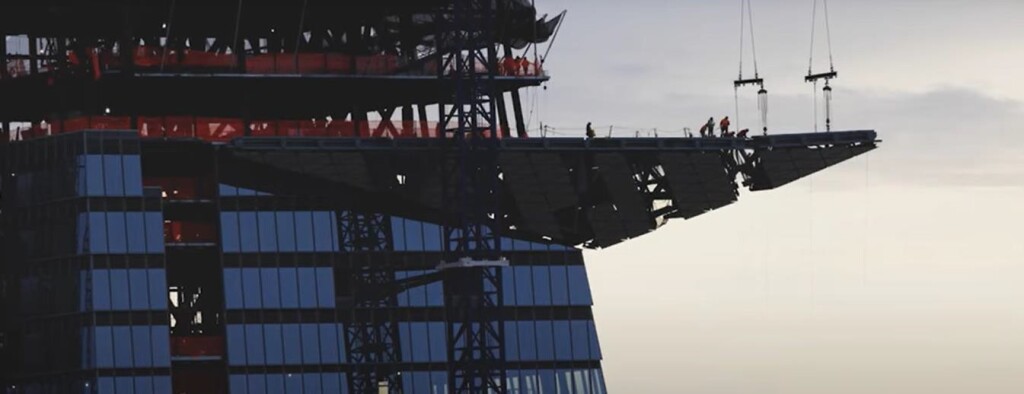Author: ing. Matteo La Torre
Tutor: ing. Giovanni Franchi
MASTER: Project and Contract Management in Construction Works
Spesso, per rispettare i vincoli di tempo, i contratti di appalto vengono stipulati e le attività di costruzione iniziano prima che la progettazione sia completata. Le successive modifiche alla progettazione possono esporre il progetto a sostanziali impatti sui costi e sui tempi, ma un efficace coinvolgimento degli stakeholder può ridurre questi rischi e, inoltre, permettere di trovare soluzioni ottimizzate per parti aggiuntive non precedentemente identificate o assegnate.
Come illustrato in studi precedenti, in questo contesto i project manager devono prendere decisioni su come bilanciare le richieste concorrenti tra i diversi stakeholder appartenenti al progetto. La scelta delle strategie decisionali è altamente correlata agli attributi e ai comportamenti degli stakeholders. Trovare imprese di costruzione che hanno un efficiente sistema di gestione delle variazioni in corso d’opera può permettere alle imprese generali e ai proprietari di trovare soluzioni efficaci in termini di costi nel progredire e finalizzare il design mentre la costruzione è già iniziata e permettere di costruire strutture uniche.
Inoltre, l’uso della modellazione BIM nel processo di approvvigionamento, coordinamento del design e controllo dei costi, insieme alla consapevolezza delle responsabilità contrattuali, può accelerare questi processi decisionali e migliorare l’efficienza.
Nel caso oggetto di questa tesi, si può vedere come questi aspetti siano stati implementati nella pratica. Nella tesi si presenta il Progetto 30 Hudson Yards e i suoi principali stakeholder, identificati come più influenti per il risultato della costruzione. Poi si indica il coinvolgimento di Cimolai nel progetto e nel coordinamento del design e delle attività di costruzione, dove si è fatto uso dei vari strumenti e tecniche di project management e del BIM, necessario per il coordinamento della progettazione, della qualità e per il controllo dei costi.
La tesi poi illustra come il sistema interno di gestione delle variazioni sia stato customizzato per questo progetto, alla luce dell’alto rischio e del suo programma ridotto, e come abbia mitigato i rischi del progetto implementando metodologie “lean” e permettendo un efficace coinvolgimento degli stakeholders finalizzato al contenimento dei costi.
La tesi illustra poi il coordinamento di design e costruzione di The Edge e The Skywalk Stair del 30 Hudson Yards. La realizzazione tradizionale in sito di entrambe queste strutture uniche comportava delle sfide complesse soprattutto legate all’altezza a cui avveniva l’installazione e agli spazi limitati. L’alto livello di coordinamento della progettazione e l’impegno degli stakeholders hanno permesso di trovare soluzioni convenienti per il cliente con ampio uso di prefabbricazione e trial assembly focalizzati al contenimento dei rischi e costi.
Il risultato soddisfacente della costruzione di queste strutture è visibile nello skyline di Manhattan.
FOR INTERNATIONAL STUDENTS:
Often, to meet time constraints, construction contracts are stipulated, and construction activities start before the design is fully completed. Subsequent design changes may expose the project to substantial cost and time impacts, but and effective stakeholder engagement can reduce these risks and, furthermore, allow finding optimized solutions for scope of work not previously identified or assigned.
As illustrated in previous studies, in this context project managers need to make decisions on how to balance competing claims between the different stakeholders in projects. The choice of decision- making strategies is highly related to stakeholders’ attributes and behaviors in practice.
Finding construction companies that have an efficient change management system in place can allow general contractors and developers to find cost effective solutions in progressing and finalizing design while construction is already started and allow building unique features.
Also, the use of BIM modeling in the procurement process, design coordination and cost control, along with contractual awareness of the responsibilities, can expedite this decision processes and enhance efficiency.
In the case study object of this Thesis, it can be seen how these aspects were implemented in practice. It presents the 30 Hudson Yards Project and its main stakeholders, identified as more influent for the outcome of the Project. It also indicates Cimolai involvement in the project and in the coordination of the design and works, where the various project management tools and techniques have been used, and an extensive use of BIM has been necessary for the design coordination, quality, and cost control of the project.
Then it illustrates how the internal change management system was tailored for this project, because of its high risk and fast track schedule, and how it could reduce project risks by implementing lean methodologies and allowing an effective stakeholder’s engagement focused on controlling costs.
It then illustrates the design coordination effort for the construction of The Edge and The Skywalk Stair of the 30 Hudson Yards. The on-site realization of both these unique structures was bringing challenges especially linked to the installation height and to the limited spaces. The high level of design coordination and stakeholder engagement allowed to find cost-effective solutions to the client with great extent of prefabrication and performance of trial assembly allowing risks and cost mitigation.
The satisfactory result of the construction of these structures is visible in the Skyline of Manhattan.



